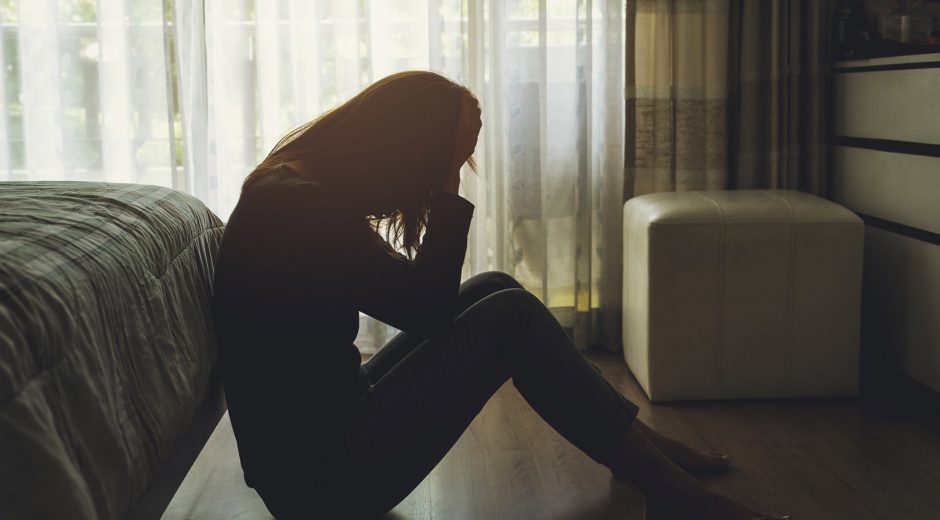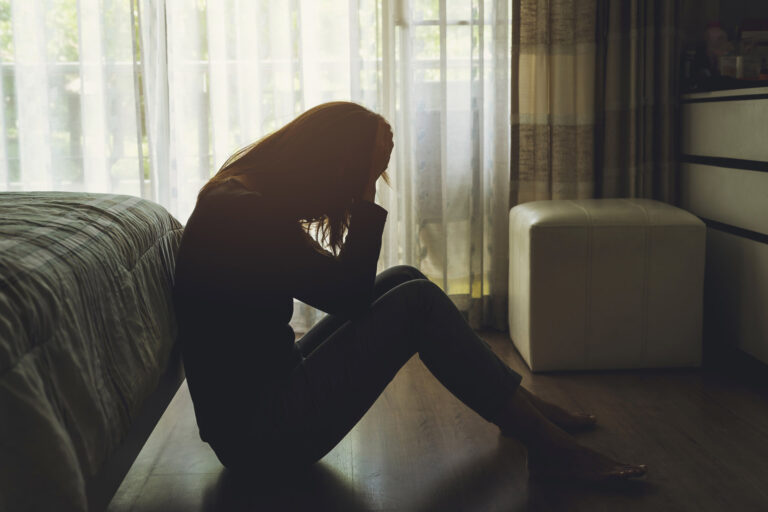A Happy Girl’s Year of Grief
I do not like being sad. I don’t like talking about sad things. I am not generally gloomy or depressed, and except for bouts of anxiety (easily explained as impatience) my general tendency is to exist an arms-length from misadventure, misery, and all things melancholy. I have an innate propensity to be hopeful, optimistic, and even silly. Laughter and humor are steady pillars in my privileged existence, so the topic of mental illness is not something I ever dwelled on… ever. I never personally struggled with depression, and other than the training I received as an educator, I was never very close to the topic – until this year when I buried three people (all who attended my wedding in 2006) – as a result of suicide.
In my forty-ish years I have lost a total of two people close to me, which suggests why I succumbed to physical and emotional numbness on the way home from the third, and most recent funeral. Each was the same: tears, confusion, moments of laughter in response to fond memories, and the constant grasping at straws seeking the inevitable, “why”?
Suicide does not have a consistent profile, address, or uniform. Our two family members (one from each side) and my husband’s childhood friend included a former Black Hawk pilot who did four tours in Afghanistan and suffered PTSD, a loving uncle and brother of 6 who just married his soulmate only the month before, and an always smiling upper-middle-class housewife and practicing Baptist who had begun curating a layette for her future grandchild.
The question of “why” is not static. It is multifaceted, complex, and in many cases, unpredictable. The pandemic confused things further, normalizing symptoms of suicide such as anxiety, depression, withdrawing from friends and family, and the increased use of alcohol and drugs. Since the onset of COVID lockdowns in 2019 the World Health Organization reported the “global prevalence of anxiety and depression increased by a massive 25%.” Humanity had developed the warning signs of mental illness as a sheer, unintended side effect of these events. Unfortunately, this blurred the lines of a typical response to being forcibly detached from the outside world with much darker, pervasive struggles.
Since 2015 our schools have been on high alert as teens and adolescents have also developed higher rates of depression and anxiety. The reasons and scenarios are as equally complex; however, research shows that dissimilar to adults, teen mental illness is directly influenced by social media. Adolescent exposure to social media was exacerbated during the pandemic as smartphones and computer screens provided an exclusive window to human interaction outside the home. The Irving School of Medicine at Colombia University stated that, “the more time spent on social media, the more likely a person will experience mental health symptoms like anxiety, isolation, and hopelessness. And according to one recent study, high levels of social media use over the span of four years was associated with increased depression among middle and high school youths.”
 The number one question, even beyond “why,” that I overheard these past eight months was, “what could I have done to stop it?” The National Suicide Prevention Lifeline offer these warning signs:
The number one question, even beyond “why,” that I overheard these past eight months was, “what could I have done to stop it?” The National Suicide Prevention Lifeline offer these warning signs:
- Alcohol and other substance use disorders
- Hopelessness
- Impulsive and/or aggressive tendencies
- Talking about wanting to die or to kill themselves
- Looking for a way to kill themselves, like searching online or buying a gun
- Talking about feeling hopeless or having no reason to live
- Talking about feeling trapped or in unbearable pain
- Talking about being a burden to others
- Increasing the use of alcohol or drugs
- Acting anxious or agitated; behaving recklessly
- Sleeping too little or too much
- Withdrawing or isolating themselves
- Showing rage or talking about seeking revenge
- Extreme mood swings
Once I started to investigate prevention, the more I was reminded of a talk on pool safety that I overheard – stick with me. A teacher at my school consulted our principal about a pool she and her husband were installing. Her biggest concern was the safety of her two small children. During their exchange she asked our principal if her children could all swim and she replied, “no.” Concerned now with furrowed brow, the teacher said, “well what is your safety plan?” I will never forget the response. She said, “we don’t have one solution, something like this requires layers of protection.” She went on to talk about their gate, their door alarm, the preventive conversations they had with their children, bells on the doorknobs…you get the picture. Ultimately, there is no ONE answer… it is a lot of little things. Suicide prevention and mental illness require this same approach.
Like I said earlier, I am a happy girl. But these last eight months I have been sad. And that is okay. Ever the optimist, my approach is to help prevent tragedies like this from happening again. Like the pool scenario, I could not find one answer, but I think it starts with saying something, when you see something. I also think, and this was not in any research I read, that simple acts of kindness matter. Smiling, being courteous, empathetic, not so quick to judge, and maybe just being a good listener are immeasurable. It is too easy these days to let anger and criticism get the best of us and propel us to say things we don’t mean. Our lives, lived safely behind screens, allow us to point fingers, bully, and rage on from our armchairs. But we can change that trend. Taking a step back, breathing a deep breath, and letting a kind gracious spirit speak on your behalf can change the world. The truth is you never know what or when will be the last thing you say to someone… I know I didn’t.
Become a Teacher. Change Lives.
If you are passionate about impacting the world around you there are few places where you can influence the future as much as a teacher. Teachers have the ability to build students up and set them on a positive course that can have a ripple effect for future generations.
If you are interested in becoming a teacher, check out our online teacher certification program and you could be teaching in a matter of weeks.





